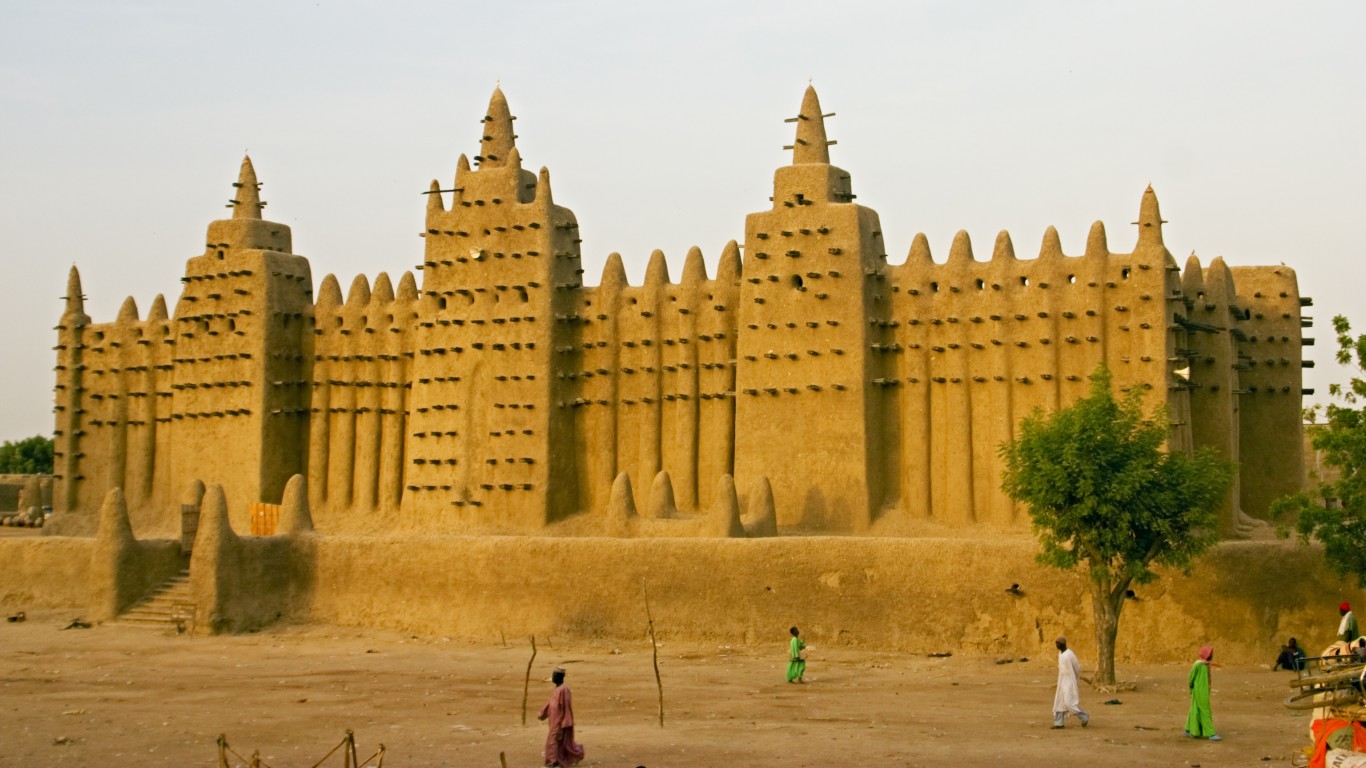
17. Mali
> GNI per capita, 2021: $2,220
> GDP, 2021: $19.14 billion (#96 lowest of 214 countries)
> Avg. life expectancy at birth, 2021: 58.9 years (#10 lowest of 194 countries)
> Population growth, 2023 est.: 2.9% (#11 highest of 237 countries)
> Population, 2021: 21,904,983
Located in West Africa, Mali has the 10th lowest life expectancy in the world. The country’s economy is based on agriculture and mining, particularly gold, but it faces challenges related to political instability, armed conflict, terrorism, and ethnic tensions. It also confronts high levels of poverty, inadequate infrastructure, and limited access to basic services.
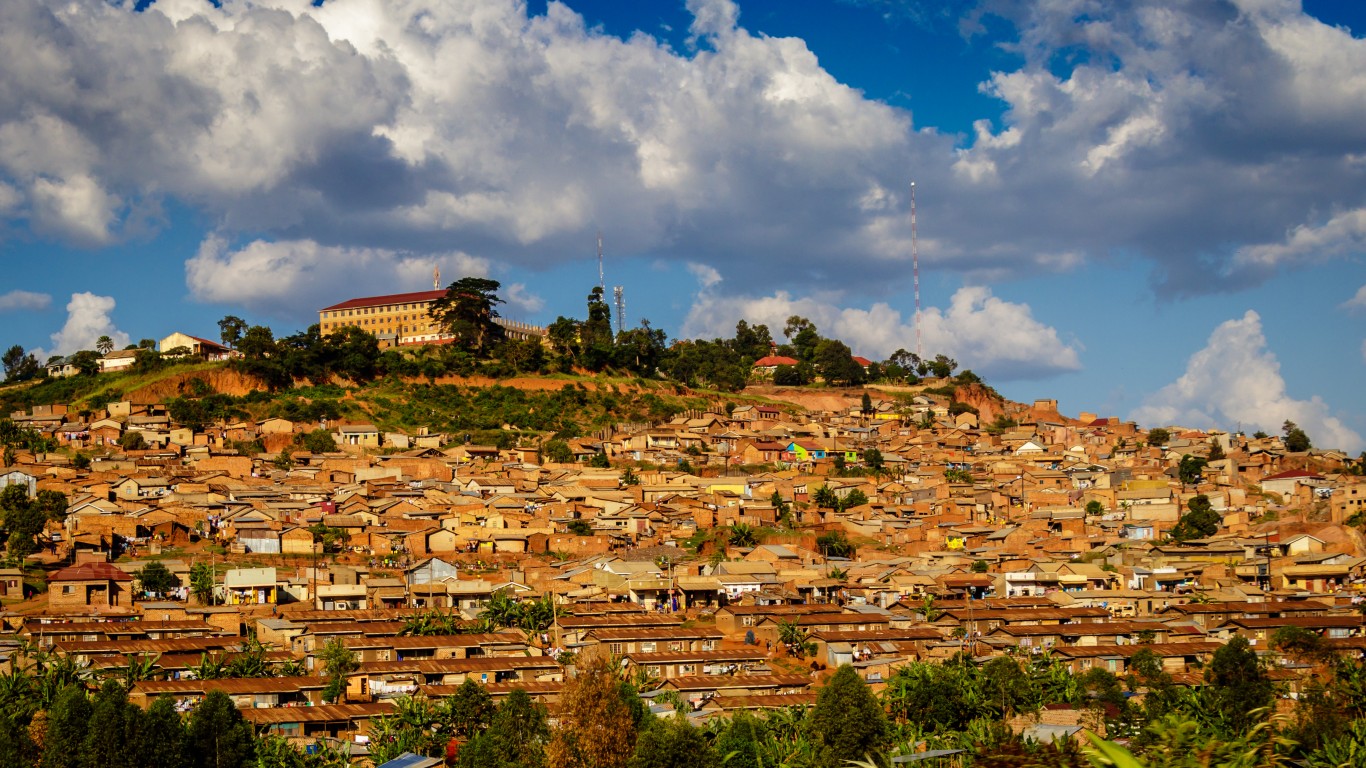
16. Uganda
> GNI per capita, 2021: $2,140
> GDP, 2021: $40.53 billion (#121 lowest of 214 countries)
> Avg. life expectancy at birth, 2021: 62.7 years (#33 lowest of 194 countries)
> Population growth, 2023 est.: 3.2% (#8 highest of 237 countries)
> Population, 2021: 45,853,778
Situated in East-Central Africa, Uganda’s economy is based on agriculture but also has some natural resources — gold and coffee are major exports. However, Uganda faces challenges related to poverty, health care, and infrastructure development. It also deals with issues such as high population growth, regional conflicts, refugee influxes, and environmental sustainability.
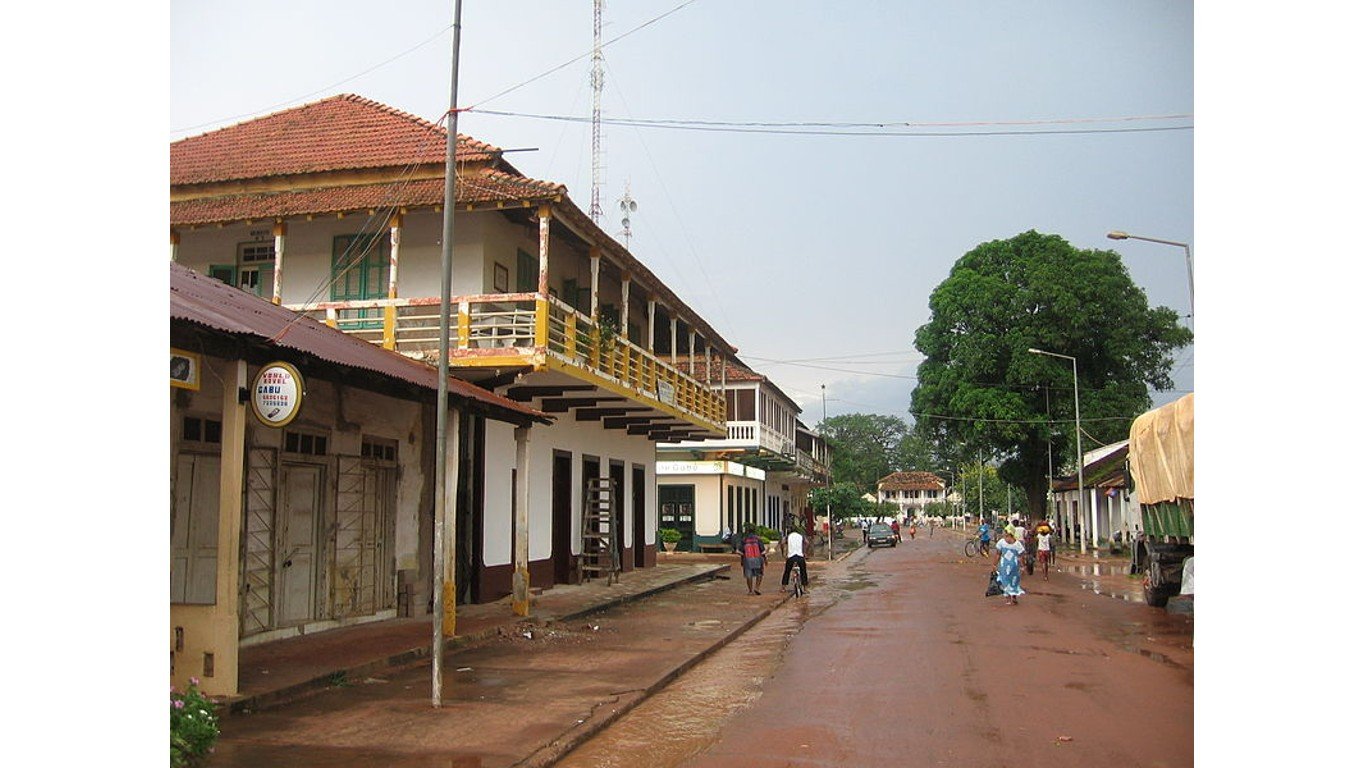
15. Guinea-Bissau
> GNI per capita, 2021: $2,010
> GDP, 2021: $1.64 billion (#25 lowest of 214 countries)
> Avg. life expectancy at birth, 2021: 59.7 years (#16 lowest of 194 countries)
> Population growth, 2023 est.: 2.5% (#19 highest of 237 countries)
> Population, 2021: 2,060,721
Located in West Africa, Guinea-Bissau’s economy relies on agriculture, including cashew nuts and fishing. However, political instability, corruption, and drug trafficking pose significant challenges to development. One of 17 countries in the world with a life expectancy under 60 years, the country faces high levels of poverty and struggles with low economic diversification, limited access to health care and education, and inadequate infrastructure.
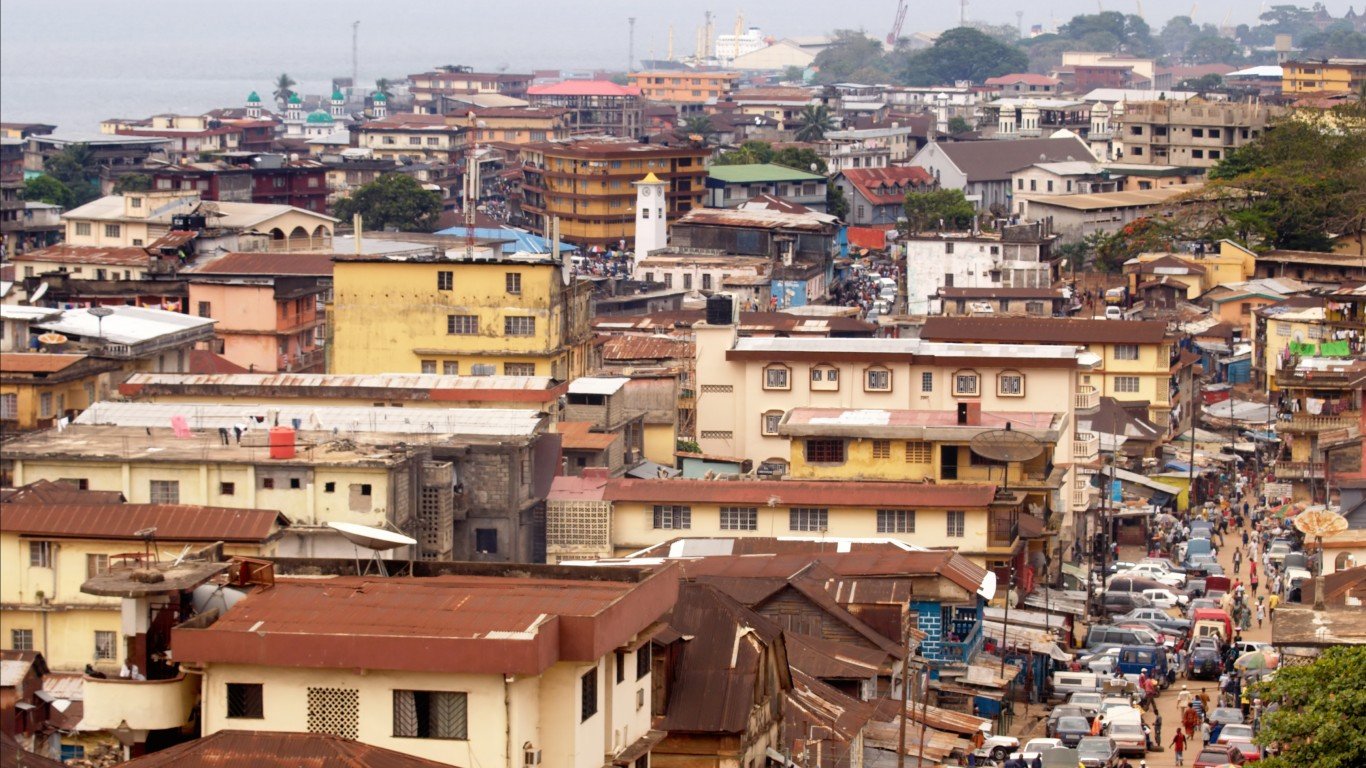
14. Sierra Leone
> GNI per capita, 2021: $1,750
> GDP, 2021: $4.04 billion (#44 lowest of 214 countries)
> Avg. life expectancy at birth, 2021: 60.1 years (#18 lowest of 194 countries)
> Population growth, 2023 est.: 2.4% (#26 highest of 237 countries)
> Population, 2021: 8,420,641
Situated on the West African coast, Sierra Leone is still recovering from a civil war and faces significant challenges in poverty reduction, health care, education, and infrastructure development. The country is rich in mineral resources, including diamonds and iron ore, and the economy has agriculture and construction activity.
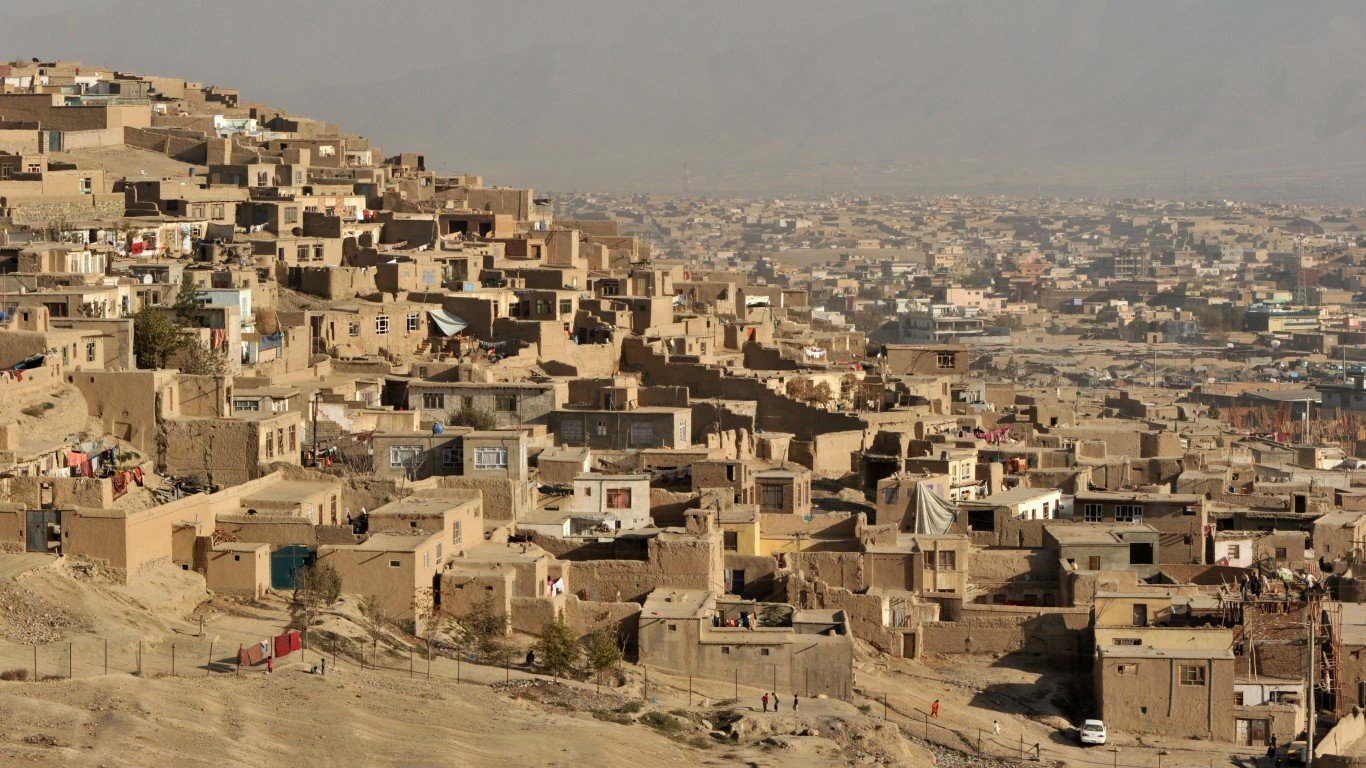
13. Afghanistan
> GNI per capita, 2021: $1,680
> GDP, 2021: $14.79 billion (#84 lowest of 214 countries)
> Avg. life expectancy at birth, 2021: 62.0 years (#29 lowest of 194 countries)
> Population growth, 2023 est.: 2.3% (#32 highest of 237 countries)
> Population, 2021: 40,099,462
The only non-African country on the list, Afghanistan’s economy is primarily agrarian. The country has experienced decades of conflict and instability, resulting in high levels of poverty, weak governance, and limited access to basic services such as health care and education. The recent Taliban takeover following the U.S. withdrawal resulted in currency depreciation, disappearing central bank reserves, and increasing inflation.





